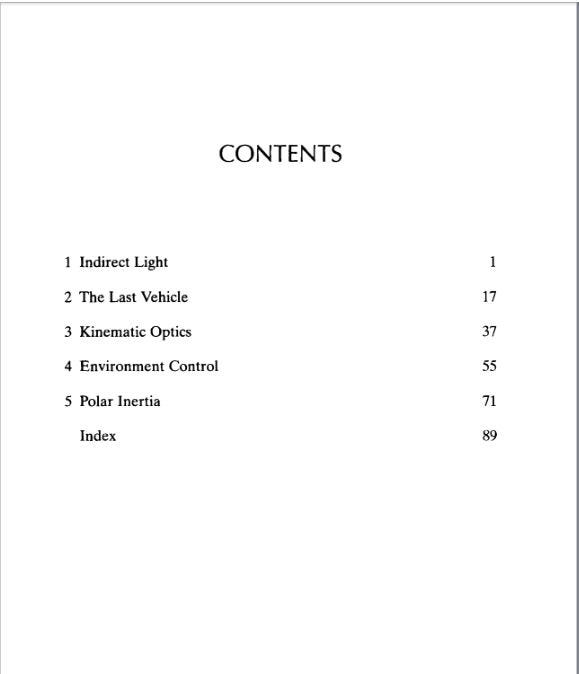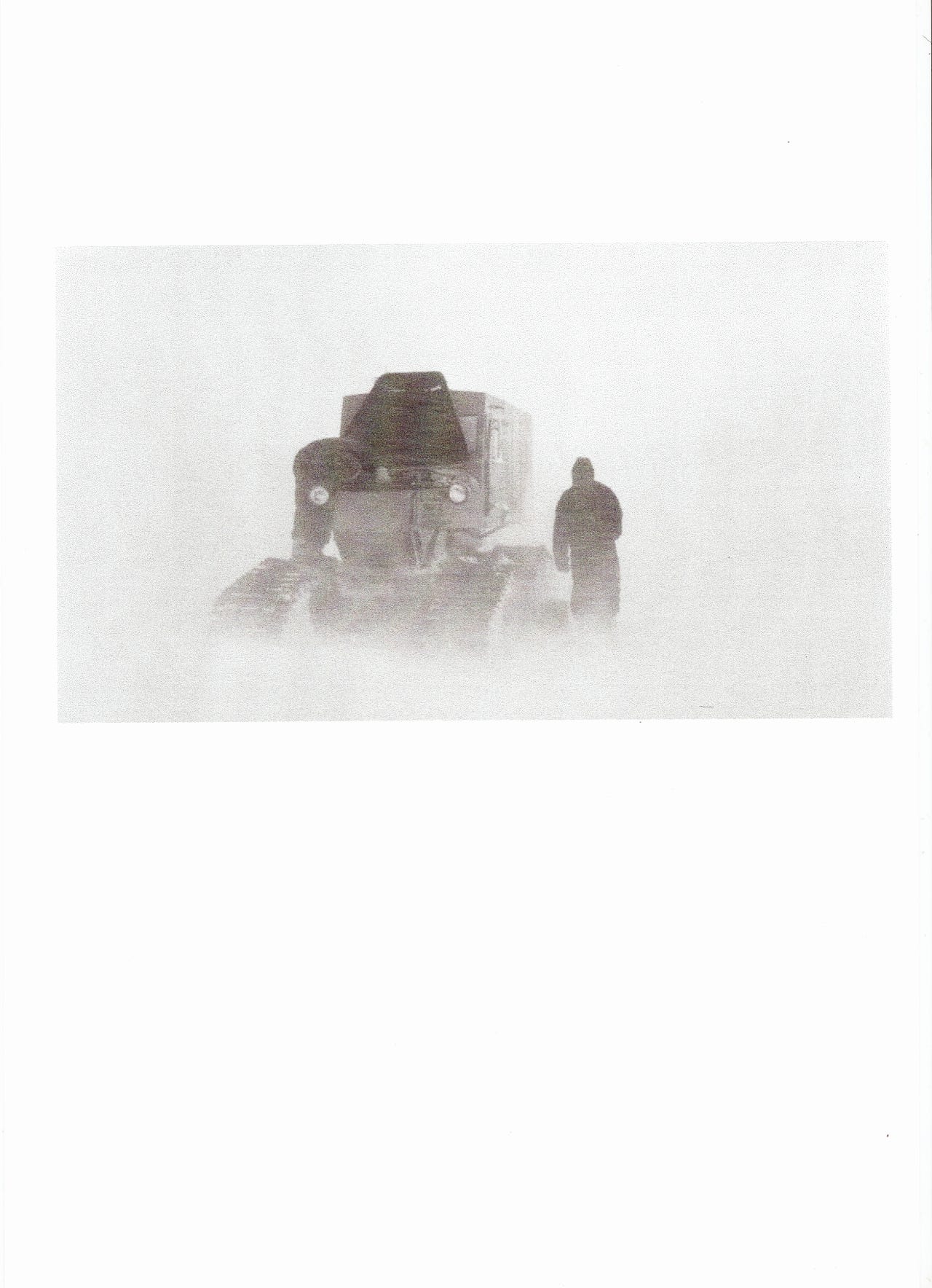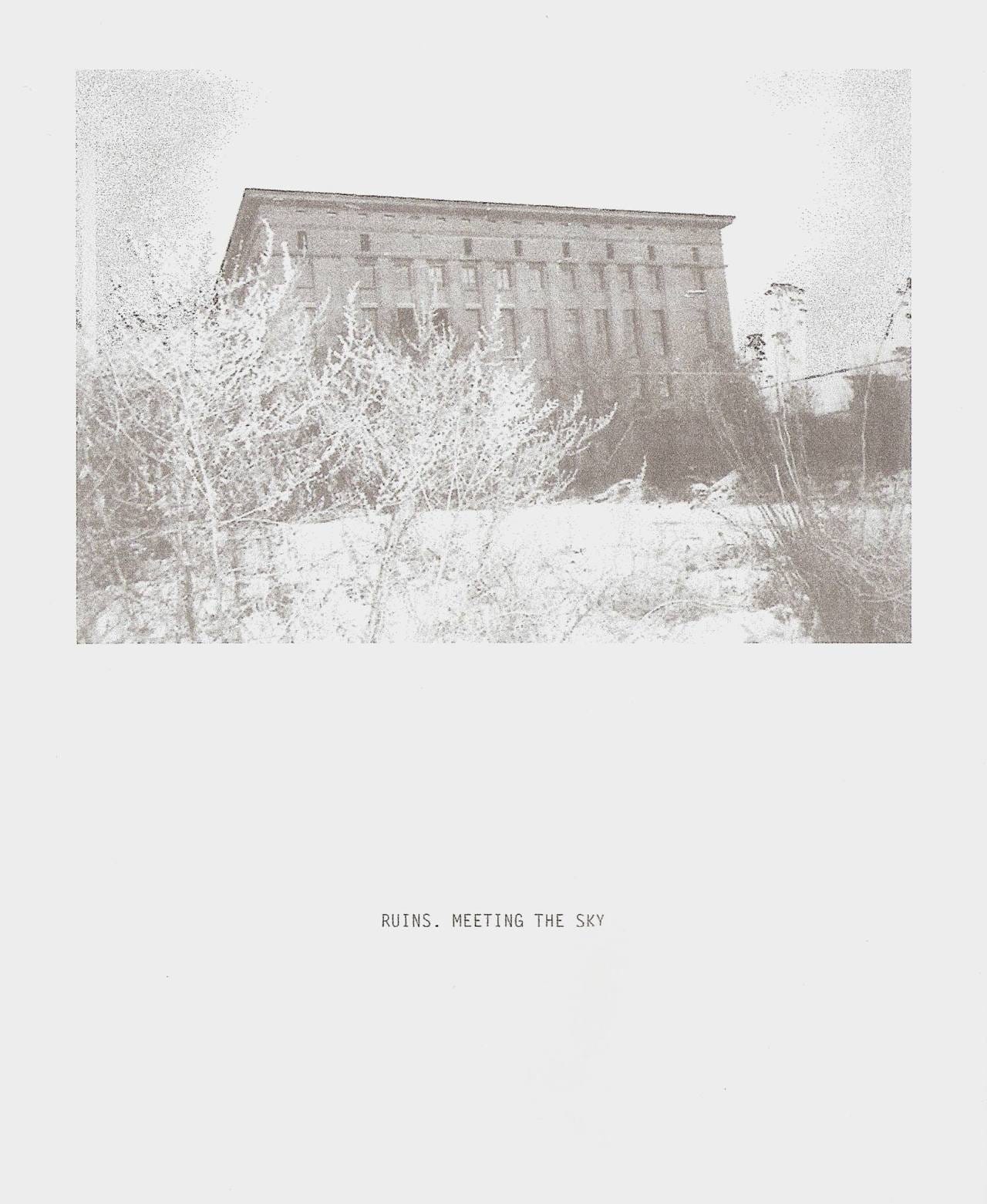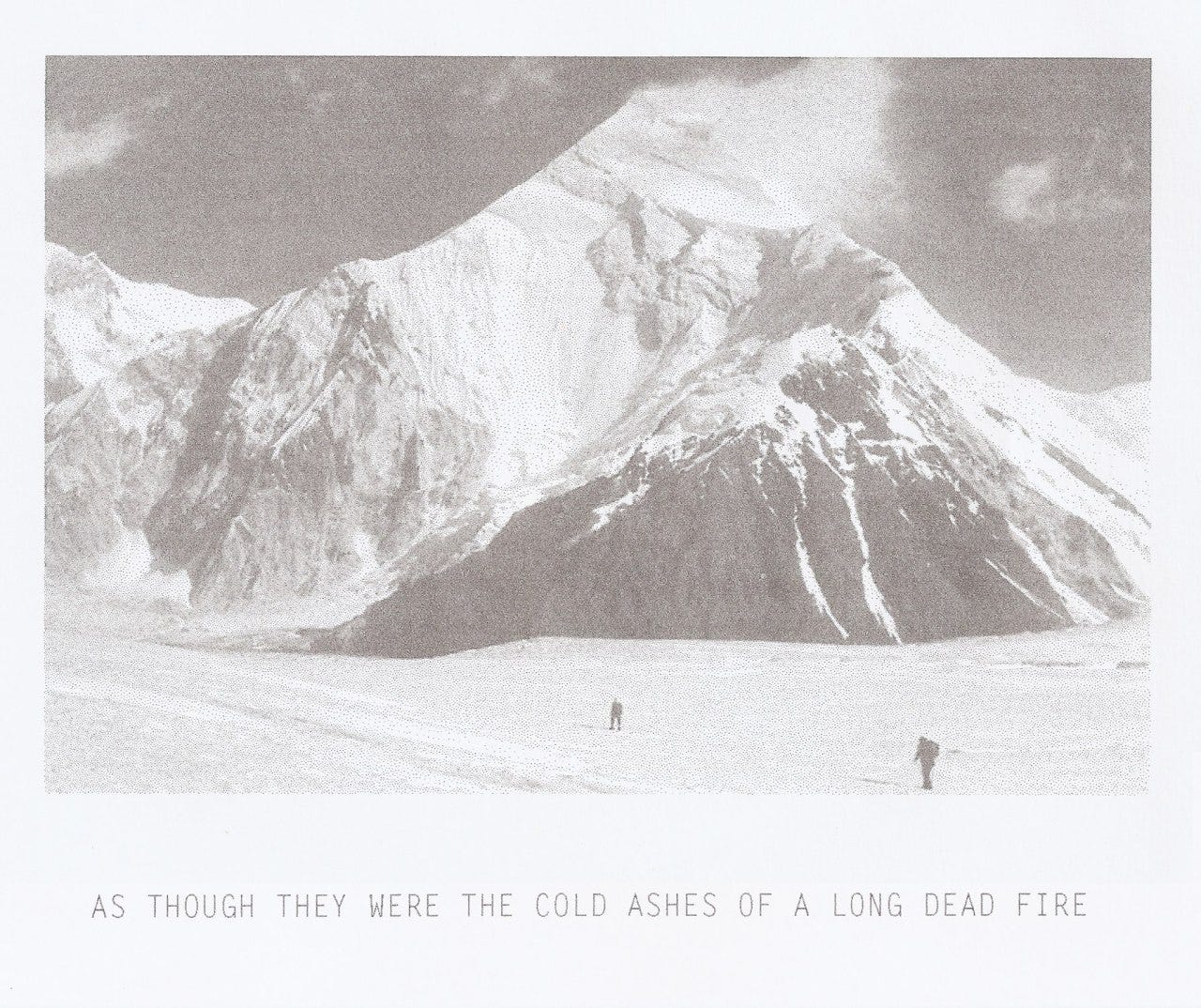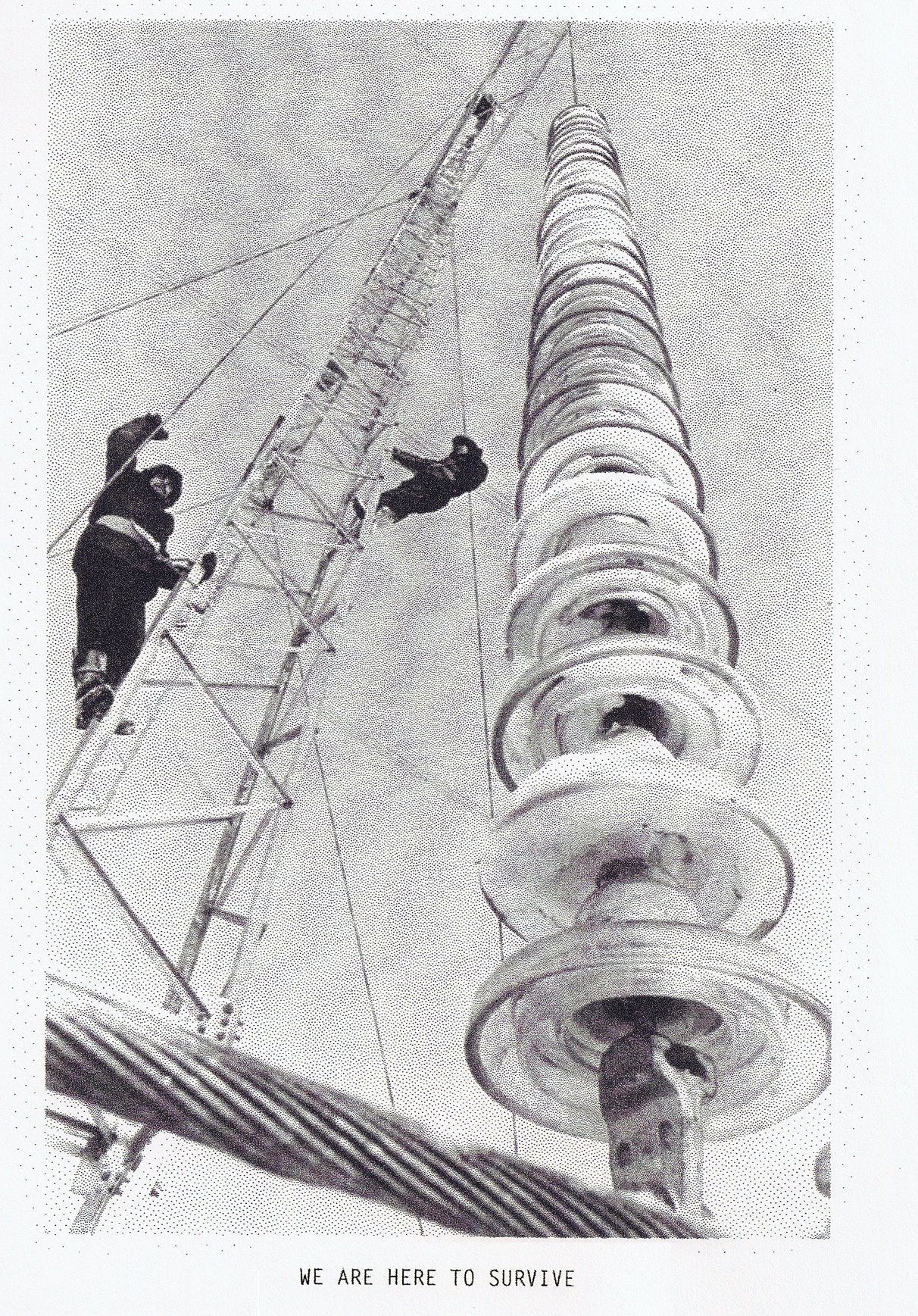Telling The Tale, With Polar Inertia
How the French project took a multifaceted and expansive approach to storytelling and style in techno.
During February, depending on where you live, it’s not uncommon to wake up to a haze of mist and light rain that engulfs your surroundings. While tinged with melancholy it's also weather of a mysterious and intriguing nature that sucks you in inviting to be explored. Before the sun rises, as you walk in the blue light of the morning to run errands or simply to escape where you live for a brief moment, you can feel a light, almost refreshing moisture land on your face. It arrives not as an annoyance like larger drops of rain but like a soft blanket being laid across any exposed skin you have. While on these walks this month, I have been revisiting the music and ideas of Polar Inertia. Their sound, which personifies the concept of journey and awe through 10-minute expansive wanders across an unfamiliar topography, has always been ideally fitting when the weather turns my local area into an unrecognisable Silent Hill-esque scene. For a moment, I can have a slight relation to the two characters they regularly picture exploring the tundra on their album artwork before returning to the warmth and normality of my home. Having been dormant since 2015, 2024 saw their long-awaited return with Environment Control released on Northern Electronics, a label whose sound was almost made to release music of this style. Following this, we can see a return to a more regular touring schedule featuring showcases in France and Sweden, a performance at Draaimolen and a return to Berghain, echoing their previous run when they were featured on lineups between 2013 and 2016. A year after this new music and with a chance to present themselves to a techno landscape that has completely morphed since this sound was blossoming, it’s relevant to look back and examine the importance of this act.
Published in 1999, French cultural theorist Paul Virilios's book Polar Inertia presented the concept that progress is conservation. What does that mean? Without expanding too much on his theories, it simply states that having the ability to be at rest is the progress we have achieved. No longer does back-breaking labour define how far human progress has come (well, at least for the lucky), it’s what we can do while sitting comfortably on a chair in the office that illustrates how much we have achieved. Eleven years after the publication of this work, we are introduced to the music of Polar Inertia. Initially developed by Luc Kheradamand, also known as Voiski, Polar Inertia now combines the work of multiple anonymous artists into a multi-faceted approach towards techno, imagery, and the live sonic experience. To describe this as simply a live techno project would be to diminish the spectacle and magnificence that surrounds their music. It’s much bigger than that. The name association with Virilios work may be purely for aesthetic purposes. In the interview below, they state how searching for a name brought them to this concept, which led to the first development of the Artic exploring imagery that has surrounded their releases from the beginning. You can see further associations tying them to the book as the chapter titles appear as the names for their collection of releases.
While the name sits between a reference and something of clear aesthetic inspiration, we can also understand inertia to be intrinsically linked to techno. Defined as to exist in rest or move in a straight line unless changed by an external force, we see this concept in every loop where patterns lean towards continuation unless acted upon. Beginning with their original release Indirect Light with the very first track Black Sun, we’re presented with this subtle and delicate journey made thematically relevant with the noise of cool and icy winds at the beginning that travel towards riveted kicks which echo the sound metal clanging at a high frequency. It comes to an appropriate ending of echoes ricocheting and sparking off each other in an echo-filled tunnel with lashings of dread and forewarnings of complexity to come. Revisiting this style after all the years that have passed is unbelievably satisfying, while Polar Inertia will always hold a nostalgic element to me (2012 / 2013 are the years I find myself beginning to fully immerse myself in “real” techno) there’s also the understanding that this utterly fantastic music even while wearing rose-tinted specs. They entice you in with their condensed energy that gradually expands, never sounding like it's just looping, each cycle relevant to the journey. Their sound was always meditative and simultaneously something you could go off to a combination of polarising elements working together creating something utterly brilliant and cinematic. This sound combined complexity and psychedelic noise with ethereal and emotional songwriting, stylistically arriving in waves, wrapping the listener in each story and never cutting to the chase. What was built in Ligovskoï - Lethe (Polar Inertia Remix) begins in a static haze steadfastly moving forward into this almost guiding light sound, a track that is constantly building and simultaneously peaking with such calibre that at points it almost becomes overstimulating to listen to with its force and tension carried underneath by a quintessential popping kickdrum. Layered within this creation are the fine details of mechanical squall and futuristic whirs, decorating the spectacle with further intrigue.
Their artistic and visual stylings helped Polar Inertia solidify their presence with a strong identity from the get-go. The visual aspect was just as important as their sound, and they chose to emphasise this by exhibiting in the Abiline Gallery located in Brussels. This was not their only outing as their work was also featured in Nuit Blanche in Paris and as part of Scenario 12 21 in Tblisi. These exhibitions combined photography, pixelated printing, and text, developing a story that juxtaposes the interaction of man with nature. Questions are left unanswered, and there's this vastness to the imagery that makes you feel small. Not in a humiliating way, just more of an understanding of the truly incomprehensible endlessness of the environment they situate themselves in. In a sense, it's almost Lovecraftian, two solitary figures alone against the backdrop of a never-ending winter desert mixed with a foreboding that something isn’t right. Interlinked with all of this is human and mechanisation representation through pylons, robots, cityscapes, filing cabinets, and, of course, Berghain. It’s a very fleshed-out approach to creating an identity than the techno landscape is used to. While we are familiar with projects based on identity (SNTS, RRose, Prince of Denmark), this goes a whole lot further, building a type of science fiction tale around their presence. The imagery sits well with it; their use of photography adds a realism to this story and thankfully is a step away from the large amount of subpar digital art that fills the visual spectrum of the genre.
Using the visual identity as an anchor, their releases regularly featured short tracks filled with monologues, such as Indirect Light and The Last Vehicle, which directly brought the storytelling into their releases. Indirect Light builds a suspenseful tale of a research assistant working in a lab conducting experiments on “Polar Children” test subjects. The narrator speaks of the relationship they develop with these test subjects and nods are given to the harmful impact unfolding due to the research process. The narrator explains how he helped free them and escape into the unknown, abandoning his life of perceived progress for a new way of thinking. Ending with a simply sublime quote;
“It’s under a shadow of obscurity that humans grow, through pain and times of doubt their greatness revealed. When all is magnificent and shining, humans lose sight. By the fall of night, true nature manifests when all is stripped down to its raw essence. We will bring about the ultimate obscurity, we will present this indirect light….. Those were the words of the Polar Children as we began our journey.”
This cliffhanger is the perfect way to enter their work, setting the scene before you're whisked away into their textured sounds and was utilised as an intro during their live performances. The Last Vehicle picks right up where it left off, taking us back to the first time the narrator became aware of the concept of the “Polar Children” and how he was introduced to the idea of two seemingly separate individuals having connected minds. This time, the story alludes to the chaotic nature of the subjects and the danger surrounding their journey to the North Pole. Using inspiration from the wide selection of media of children with telekinetic powers and reimagining it through techno is a brave choice, but one they have executed extremely well.
The tracks Major Axis and Parallel Transport can be seen as the group's defining work. Featured on their second release, both of these pieces are uniquely memorable and still stand out strongly if heard on a dance floor. Major Axis plays on its name with a creaking and looping radar sound acting as a pendulum hypnotising you further into complete movements. It's full-bodied and deep with heightened pressure throughout and phenomenally paired with monstrous echoes blasting through caverns. It follows Last Vehicle and articulates the fear and mysteriousness we’ve just had narrated to us. Parallel Transport is surely their tour de force. Pulsating and oozing with intrigue and jaw-dropping awe, the throbbing nature of its essence succumbs dancefloors into transfixion. It’s so large and guiding, almost sounding like some natural force that can’t be contained any longer. Conjuring up images of avalanches and ice fall, there's this monumental power built into it that's so captivating to listen to. In their archetypal style, each second of the listening experience is fleshed out with a richness to the sound brought to life with eloquent and expressive brushstrokes in the production process.
What’s interesting about this is how relatively small this sound stayed. Despite the clear cult following and obsessiveness surrounding Polar Intertia (and justifiably so, given their releases), this style and energy sit on their shoulders. We do see other iterations of this sound through artists such as RRose, Abdulla Rashim and, in a more recent sense Evigt Morker and Fabrizio Lapiana. While these are all well-established artists in their field, what is absent is fanatical popularity. Unlike Hardgroove, New Tribal, and the resurgence of Vocal House, we don’t see the same shift in the culture towards this trend. Maybe this is a good thing, depending on your preference. Small doses are valued more than excess, and if anything, it adds to the mysterious nature and intrigue behind the artists and the sound. This concept is explored in Thomans' latest documentary on the French techno scene between 2013 and 2018 but in particular reference to the sound of Antigone.
They continued forward with Kinematic Optics, their largest release up until that point, arriving in 2015. Stepping away from the world-building and storytelling we’d seen previously, this release concentrated on communication only through music with a collection of songs that triumphed their low-end forward sound. Stand-out pieces include Vertical Ice and Hell Frozen Over, building almost operatic and theatrical-styled techno tinged with melancholy and reverence. It’s at this point that the releases stop. Live performances continued as they continued their presence in Berghain, Bassiani, Reaktor Events, and Fuse. We then begin to see fewer touring appearances as Voiski and other artists involved turned towards other projects; however, the identity of Polar Inertia remained. In February 2024, they reared their head with something new and certainly unexpected. Environment Control arrived with the first track of the same name, dragging us straight back into where we’d left with the Polar Children. I never thought I would be so relieved to hear such a monotone and rugged American accent, but here we were. This has been their biggest venture in versatility, presenting eight tracks that are firmly rooted in the logic of the project but are one hundred percent reaching further with the capabilities of what the sound can do. Tracks such as Smothering Dreams effectively invite the listener to bathe in a pool of smooth distortion and TV static. This push of design follows into Deflection V, which creates a complex web of slick whips in a digital vortex that sit on top of each other just right. The listening experience is complete; the sounds entering and filling the space with aural symmetry are extremely satisfying to listen to. What's noticeable is the change in speed, with Artic Horizon, the jump into 145 BPM along with the characteristic synths gives all the signifiers of trance. While the techno to trance pipeline is a trope many fall into, it doesn’t sit so fittingly here. This is still very much their brand through sound layering and complexity, just dressed like we’ve never seen it before.
Through storytelling, craft, and immersivity built with their sheer raw talent, Polar Inertia has defined itself as a project that at this point is essential listening for anyone who cares not just for techno but for electronic music as a whole. Their start to 2025 has been quiet; we wait and see what comes next.





